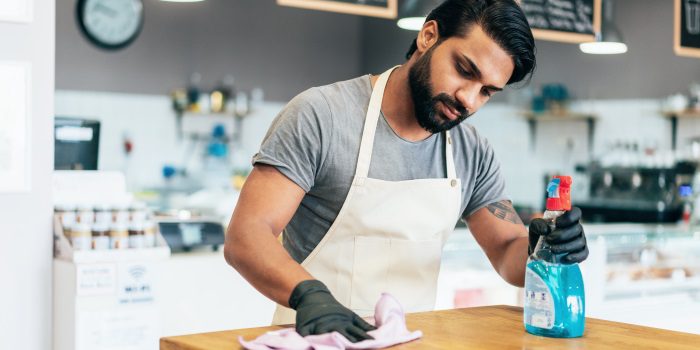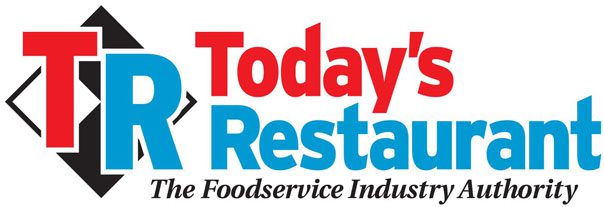
Cleaning, sanitizing, disinfecting ~ what’s the difference?
The Centers for Disease Control and Prevention and the Environmental Protection Agency have released comprehensive guidelines outlining how to keep restaurants and other foodservices running safely.
There’s a wealth information on how to properly clean, sanitize and disinfect different parts of your establishment. Here’s a quick roundup of what these steps mean that you can share with your staff.
Cleaning
Cleaning physically removes dust, dirt, spills, stains, and other unwanted matter from surfaces. Cleaning should always come before sanitizing and/or disinfecting.
Examples of cleaning include:
- Wiping down tabletops, seats and menus to clear off crumbs, spills and smudges
- Dusting lighting fixtures
- Wiping down kitchen work surfaces, sweeping floors
- Scrubbing pots and pans with soap and water
Cleaning does not kill pathogens.
Sanitizing
Sanitizing follows cleaning and helps to reduce the number of microorganisms such as bacteria and germs to below levels deemed safe by the CDC.
Sanitizing is an effective preventative practice since it inhibits the growth of harmful bacteria and reduces the number of germs on a surface.
Note however, that sanitizing does not kill all viruses (you need to check the label of the sanitizer and work with your sanitizer provider to ensure its effectiveness).
Food-safe sanitizers can be used on any surfaces that come into contact with food. Most sanitizing products tell you to allow the sanitizer to air dry for 30 seconds on the surface. Food-prep surfaces should be sanitized multiple times per day, including:
- Cutting boards
- Countertops and work surfaces
- Food contact equipment
Disinfecting
Disinfectants kill bacteria and viruses on hard, non-porous surfaces. The EPA currently recognizes disinfecting as most effective way to kill viruses like the coronavirus, so it’s important that you not only clean high-touch points but also regularly disinfect them.
Key areas and points to disinfect multiple times a day (or ideally, between uses) include:
- Doorknobs, railings, light switches
- Bathroom surfaces, faucets, sinks, toilets
- Menus, ATMs
- POS systems, keyboards, phones
- Tables, takeout stations
- Drink machines
When it comes to disinfectants on food contact surfaces, you might want to err on the side of caution and not use them for this purpose as some are approved for food contact surfaces and some are not. Disinfectants must never come in direct contact with foods.
You must make sure users read the product label and you can ask your supplier to provide proper training in the use of the disinfectant you purchase during shift meetings.
The EPA has released a list of approved disinfectants for use against the coronavirus. Again, read the label of a product to ensure you are using it on the proper type of surface in the right way and are aware of any special directions when applying the product.
The EPA’s List N goes into detail on the types of surfaces on which you can safely use a disinfectant product. Click the green plus sign next to a product’s registration number and look at the Surface Type.
- You can use certain products on surfaces that touch food, such as dishes, cooking utensils, and countertops if it includes the phrase “Food Contact.” If it doesn’t, it’s not safe for these surfaces.
- Sometimes the product’s directions will require you to rinse the surface after disinfecting—List N/Surface Type will read Food Contact Surfaces, Post-Rinse Required.
- When it’s not necessary to rinse after using the disinfectant, it will read Food Contact Surfaces, No Rinse.
The CDC has provided guidance for cleaning and disinfecting effectively.
- Wash your hands thoroughly and wear disposable gloves and any other personal protective equipment that is recommended on the bottle of the disinfectant you are using.
- Clean visibly dirty surfaces with soap and water.
- Use appropriate cleaning or disinfectant product in the proper concentration and dilution as listed on the label.
- Follow the directions on the label to determine the contact time, or amount of time that the disinfectant should remain wet on the surface to ensure the product has time to act, and follow instructions about rinsing or wiping the surface after disinfecting.
- Wash your hands thoroughly after using disinfectant.
And always keep disinfectants locked up.





Recent Comments